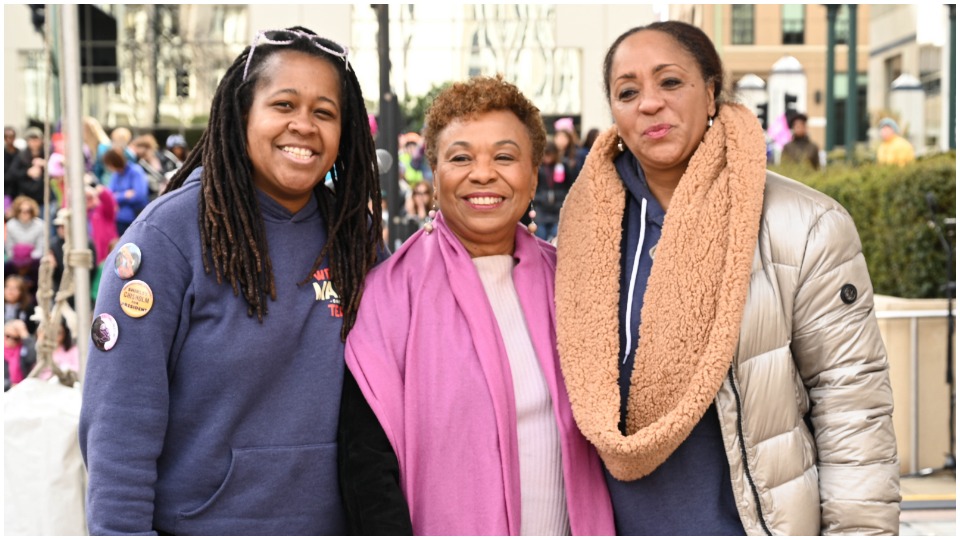
WASHINGTON — A new study of paychecks for working men and women shows the equal pay gap is even wider than people realize.
That’s because the commonly used figure—median pay for a working woman last year was 83 cents for every dollar the median working man earns—just counts full-time workers.
Add in the nation’s part-timers, including 33 million part-time working women, reports Joan Mason of the National Center for Pay Equity, and the gap widens to 73 cents per dollar.
There are ways to close that chasm, her study adds. And one big one, though Mason didn’t go into details, is to unionize.
Mason’s study was one of several released on Equal Pay Day, which this year fell on March 15. That’s been the day each year when the median pay for a working woman in the U.S. finally catches up to the median for a working man from the year before. The median is the point where half the group is above the figure and half below.
In other words, for every dollar a working man earned by last December 31, it took the working woman that whole year plus the extra time through March 15 to match that dollar. The 83 cents figure, the one traditionally used, has barely budged for years.
The new studies shed more light on why there’s a chasm between men’s and women’s pay. One, from the Biden administration’s Gender Policy Council, states the obvious: Millions of working women are shoehorned, by cultural attitudes, past practices, race, and sexism, into lower-paying occupations than male counterparts with the same education and skills.
Just as in other factors involving workers, the coronavirus pandemic laid bare such exploitation for the entire country to see, said Department of Labor Women’s Bureau Director Wendy Chun-Hoon. For one thing, woman-heavy occupations—such as restaurants, bars, and retail—were in industries that tanked when the pandemic forced mass closures. Millions of working women lost jobs. Hundreds of thousands of those positions, and those workers, haven’t come back.
And even if women wanted to keep their jobs, millions couldn’t, the study said. They had to quit to stay home and care for their kids, including supervising them when the kids sat at computers to learn from their teachers via Zoom calls. Paid child care virtually disappeared.
Mason flagged the part-timers, especially in the low-paying occupations such as restaurant servers, farm workers, and home health care aides. While she found a median pay gap for all working women of 73 cents to the man’s dollar, it’s even wider for some subgroups. The lowest: Latinas, at 49 cents to the dollar.
“The wage gap is a way of talking about the tangible consequences that sexism and racism in our economy have on women. And it touches so many women year after year, no matter their occupation, education level, or age,” Mason said.
One way to close the chasm is to unionize, she declared—especially since federal legislation to combat the pay gap is again stalled by a Senate Republican filibuster threat.
“In your own workplace, think about advocating for pay transparency and simple changes like salary bands in job ads” and educating bosses about the benefits of paid family leave, Mason wrote in her report.
“And talk to your coworkers about forming a union. Pay gaps are smaller, and paid leave is more common, among unionized workers!”
Mason did not provide ratios in her study for union and non-union working women, but Press Associates Union News Service (PAI) calculated them earlier in 2022, using the pay data, by groups, that accompany the Labor Department’s annual release discussing union density.
Union women earn more than almost anybody else. The sole exceptions: Union men, and—the benchmark by which other groups are measured—adult white men.
- Median weekly pay last year for all men, aged 16 and over, was $1,097. The median for all women was $912. Those figures show the yawning pay chasm between working men and women: 17%. That’s the 83 cents on the dollar for full-time workers the other studies cite.
- Median weekly pay for those benchmark adult white men last year was $1,125. For adult white women: $925. That’s an 18% gap.
- Median weekly pay for white union men last year was $1,257. That’s a $160 weekly advantage for union men. Median weekly pay for white union women was $1,121. If you’re a working white union woman, your pay gap with that benchmark group of all white working men is four bucks. There’s a pay gap for union women: Between them and union men: 11%.
The pay gap costs working women billions, the federal report said. “Segregation by industry and occupation cost Black women an estimated $39.3 billion, and Hispanic women an estimated $46.7 billion, in lower wages compared to white men in 2019” alone.
“Occupational segregation is a long-standing driver of gender and racial inequality in the workplace, but the Covid-19 pandemic exploded many of its outcomes, causing real economic harm to working women and their families, especially women of color,” it elaborates.
All of this, advocates for working women contend, points up the need for federal legislation putting teeth into the 1962 Equal Pay Act, which court rulings have eroded in the ensuing 60 years. That’s what veteran Rep. Rosa DeLauro, D-Conn., has been pushing for more than a decade with her Paycheck Fairness Act and related legislation.
“I think about the millions of women workers across this country who cannot take a day off, nor take time to be with their families for fear of losing their jobs or risking their pay for the day. And that is why I continue to fight for equal pay for equal work, the monthly Child Tax Credit, paid sick days, paid family and medical leave, high-quality healthcare, and affordable child care,” she says.
“Equal Pay Day is a concept intended to get us thinking differently about how insidious the pay disparity between men and women really is—and to get us motivated to remedy it, once and for all,” Labor Secretary Marty Walsh said in his statement unveiling the federal report. “Gender inequality shows up everywhere in our society, but its expression in the workplace is striking in its fundamental unfairness.”
“One lesson hopefully derived from the pandemic is how interconnected” everyone is “and how the labor of some workers—particularly those caring for children, people with disabilities, and older adults” and in household labor—“creates the infrastructure” to let working parents and other adults stay in paid jobs, the federal report adds.
Those infrastructure-creating workers should be rewarded with higher, and equal, pay reflecting their real worth to the economy, the federal report advocates.










